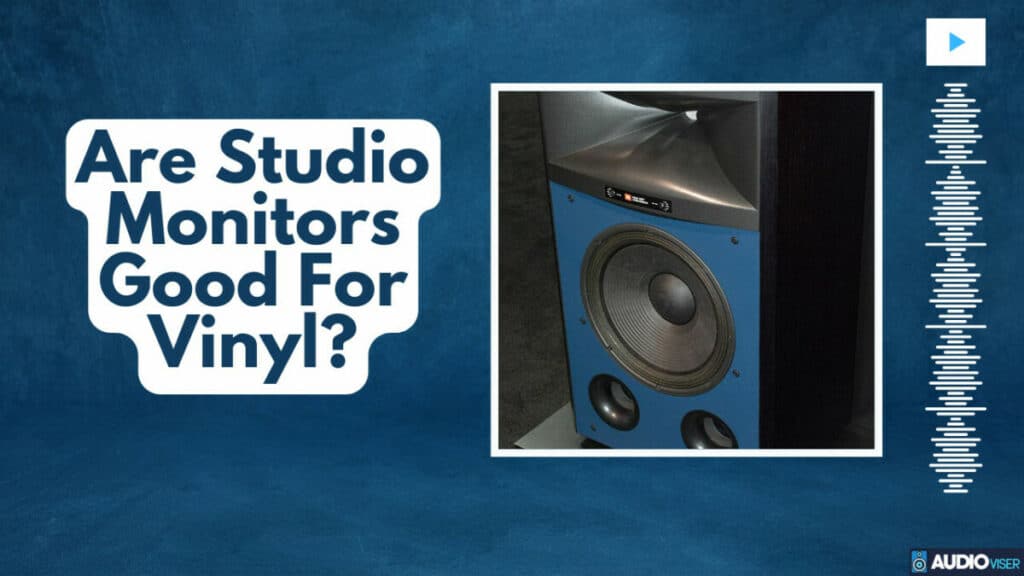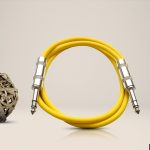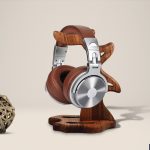Ever caught yourself thinking, ‘Are studio monitors the secret sauce to elevate my vinyl game?’ Well, you’re not alone. It’s pretty much a universal truth – the right gear can totally transform your experience.
So, let’s get down to the nitty-gritty, sift through the pros and cons, and see if studio monitors are the real deal for vinyl.
Let’s crank up your listening experience a notch, shall we?
Should You Get Studio Monitors To Listen To Vinyls?
Absolutely, you can totally groove to your vinyl tunes through studio monitors. Why, you ask? Well, studio monitors are known for their spot-on, detailed sound reproduction. So, when you’re spinning that vinyl, you’re going to hear the music in a precise, clear way, taking in all the unique details and subtleties that the analog format offers.
However, keep in mind that studio monitors might be a bit of a double-edged sword – they’ll expose everything, the good, the bad and the static. These babies might be so brutally honest that they could highlight any imperfections or noise in your vinyl records that you might have missed otherwise.
Remember, traditional home stereo speakers are usually a bit more chill. They tend to add a bit of their own flavor, sort of ‘coloring the sound’ to make your casual listening sessions more enjoyable. On the other hand, studio monitors are like the straight-A students in your class – they prioritize accuracy above everything else.
So, when it comes down to the question – are studio monitors perfect for vinyl – the answer really depends on you. Are you into hearing an authentic, super detailed version of your vinyl recording? Then, studio monitors are your best pals. But, if you’re digging a warmer, more colored sound, then you might wanna stick to good old home stereo speakers. It’s all about finding what strikes the right chord for you!
Understanding the Basics of Studio Monitors
So, you’re set on cracking the code of studio monitors, right? That’s dope! These bad boys are key to getting that clean, unfiltered sound when spinning vinyl.
First things first, let’s get to grips with the different kinds of monitors out there. Basically, we’re talking about two types: active and passive. Active monitors have their own built-in amps, which is super handy but also means they’re typically a bit pricier. Passive monitors, though, need an external amp, but that gives you a bit more sway over the sound.
Now, the acoustics of your room is another biggie. The design and materials of your space can totally switch up the sound quality and mess with how the sound from the monitors hits your ears. Got lots of hard surfaces? They’ll make the sound bounce around, giving you an echo. But soft materials, they drink in the sound, cutting down on that echo.
Studio Monitors’ Sound Quality
If you’re a vinyl junkie like me, you know that the real magic is in the sound quality. Studio monitors are the real deal, man. These bad boys offer you an intensely clear and accurate sound, which is just top-notch for spinning those vinyl records. They’re engineered to belt out audio signals without messing with their original sound – a feature that’s absolutely essential for any vinyl lover.
But hey, there’s more to it than just the sound. You’ve gotta consider the longevity of the monitors and how much you’re willing to shell out.
| Budget-Friendly | Splurge-Worthy | |
|---|---|---|
| Longevity | Sure, monitors in this price range might not stick around for the long haul, but that isn’t always the case. | Top-shelf monitors, on the other hand, are typically more durable and can take a beating for longer. |
| Sound Quality | The sound may not be as polished or spot-on as you’d expect. | With these, you get the best, most premium sound quality that money can buy. |
| Bang for Your Buck | These are a solid option for newbies who aren’t quite ready to make a big investment. | If you’re all about that music life, these are a total game changer and worth every dime. |
At the end of the day, it’s all about finding a sweet spot between what you need and what you’re cool with spending.
Vinyl Playback on Monitors
Listening to vinyl on these gadgets is seriously next level. The sound quality is just top-tier, it’s like you’re in the studio with the artists themselves.
Now, let’s break down the real deal, the technical stuff: we’re talking turntable setup and speaker placement.
- Turntable Hook-Up: First things first, you’re gonna need a preamp. This nifty little device boosts your turntable’s signal so that your speakers can actually make sense of it. Invest in a decent one, you don’t want any loss in sound quality.
- Speaker Placement: Ideal positioning is the name of the game. Set your speakers at the same level as your ears and keep them equidistant from where you’ll be chilling. This sets up a ‘sweet spot’, where the sound from both speakers collides and gives you the best audio experience. Wondering if studio monitors can be placed sideways? It’s important to know the best way to position them.
- The Finishing Touch: You might want to think about getting a sound isolation pad for each speaker. They limit vibrations and help keep the sound sharp and focused.
Follow these steps and you’ll be all set for a vinyl listening session that’ll blow your mind. Trust me, it’s gonna be epic.
Pros & Cons of Using Studio Monitors for Vinyl
When you’re rocking those studio monitors for your vinyl records, you’re scoring some serious perks. You’re getting that raw, unfiltered sound that’s as real as it gets. However, you should also know that leaving studio monitors on all the time might have implications on their longevity, so keep that in mind.
Alright, so let’s get real. Using those professional-grade speakers for your vinyl collection has its fair share of hiccups. First off, getting the monitors in the right spot can be a bit of a pain. These bad boys aren’t just a plug and play affair. You’ve gotta position them just right to really get the most bang for your buck. Figuring out the perfect distance between the two, from the wall, and from where you’re chilling is all part of the game.
Now, let’s talk about room acoustics. These studio monitors pull no punches – they’re like that brutally honest friend who tells it like it is. They’ll expose every little hiccup in your room’s acoustics. Got a room with hard surfaces that ping pong sound waves around? Or cushy furniture that soaks up the sound? You’re gonna hear it.
Selecting the Right Studio Monitors for Your Vinyl Collection
There are a few crucial things you need to keep in mind:
First up, where you’re going to place your monitors. The spot where you set these bad boys up can seriously make or break the sound. So, look for monitors that have adjustable acoustic settings – they’ll give you the flexibility to adapt to your space.
Another thing to consider is the versatility of the studio monitors. For example, have you ever wondered if studio monitors can be used as TV speakers? It’s worth checking out to maximize their functionality in your space.
Next, let’s talk money. Be real about how much you can spend. Sure, top-of-the-line monitors are going to give you killer sound, but if they’re going to leave you eating ramen for a month, it might be wise to consider some more budget-friendly options. There are plenty of less expensive monitors out there that can still pack a decent punch.
And of course, we can’t forget about sound quality. You’re going to want monitors that deliver a neutral, or ‘flat’ response. This way, you’ll hear your vinyls as they were intended to be heard, without any coloration or distortion.
Choosing the right monitors isn’t just about the technical jargon, it’s about striking the right balance between what you can afford and what your ears deserve. Take your time, do your homework, and you’ll find the perfect fit for your vinyl collection. Trust me, your future self will thank you.
Conclusion
When it comes to the world of sound, studio monitors could be either your best buddy or your worst nightmare when playing your vinyl records. They’re the real deal, offering top-notch clarity and precision, but they’re also brutally honest, bringing out every single flaw.
So, you’ve got to be smart about picking them, keeping in mind the possible hiccups. The right studio monitors can make your vinyl records sound like heaven, while the wrong choice might just turn them into a hot mess.
Composer & Audio Engineer
I’m a composer and audio engineer crafting sonic magic. Combining my skills in rhythm, harmony, and sound synthesis to create the ultimate auditory experience.









